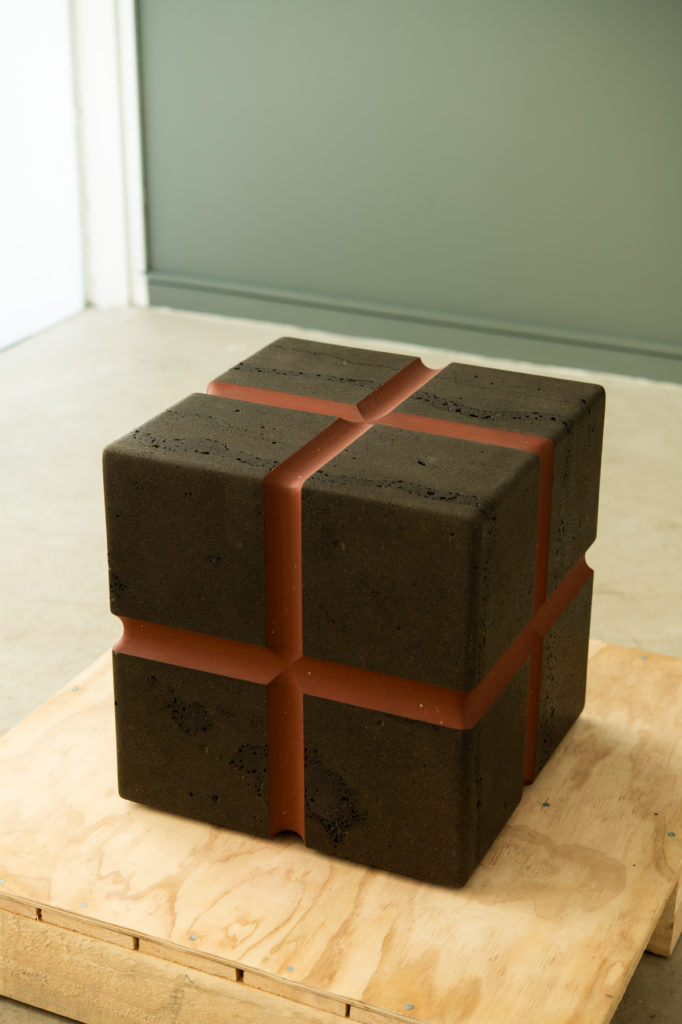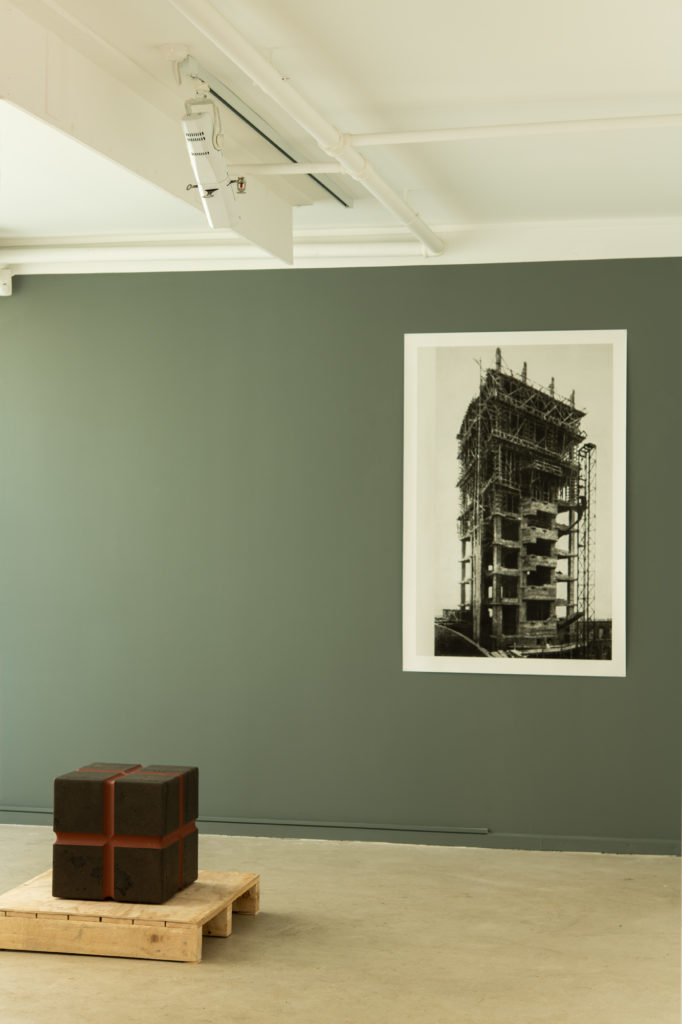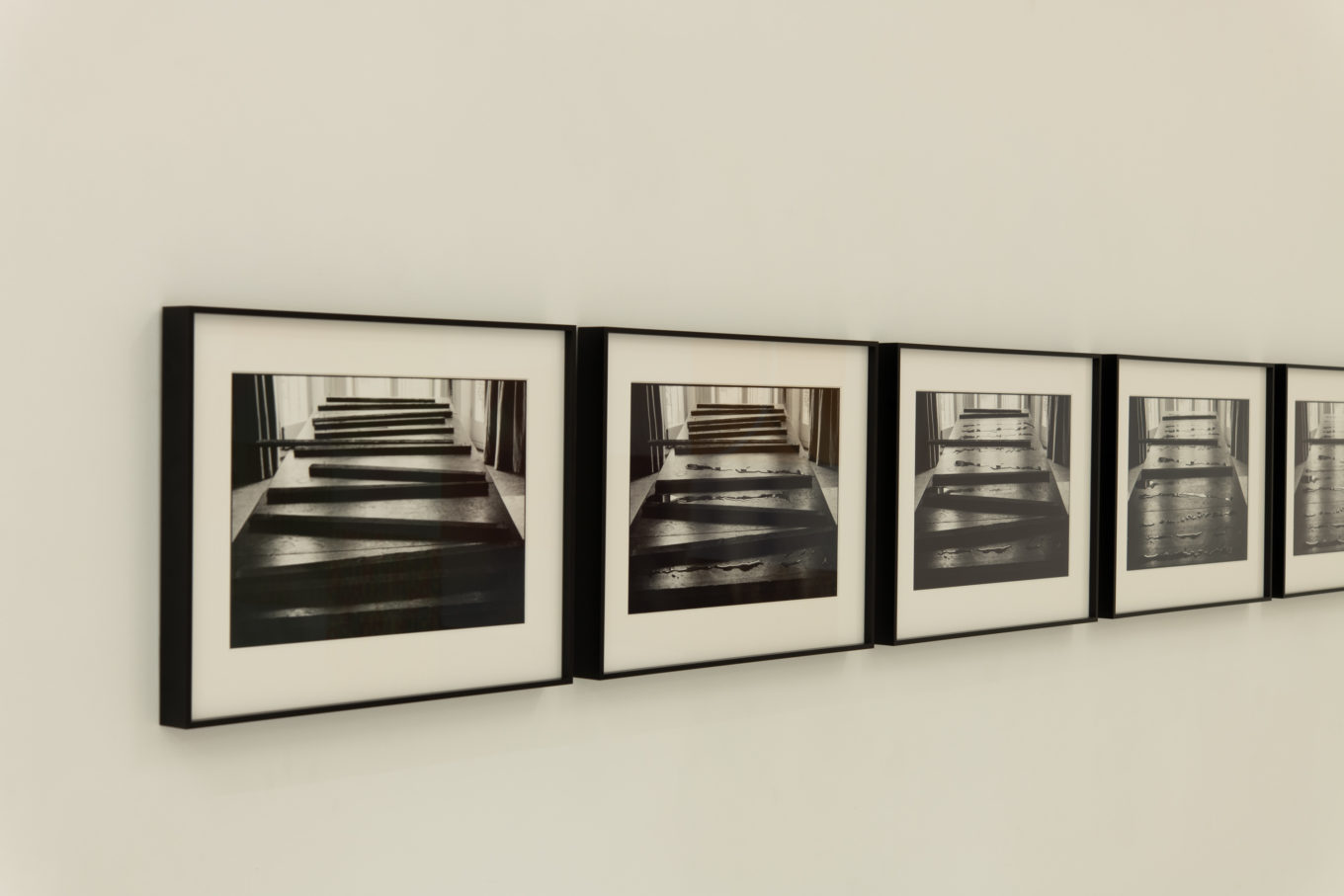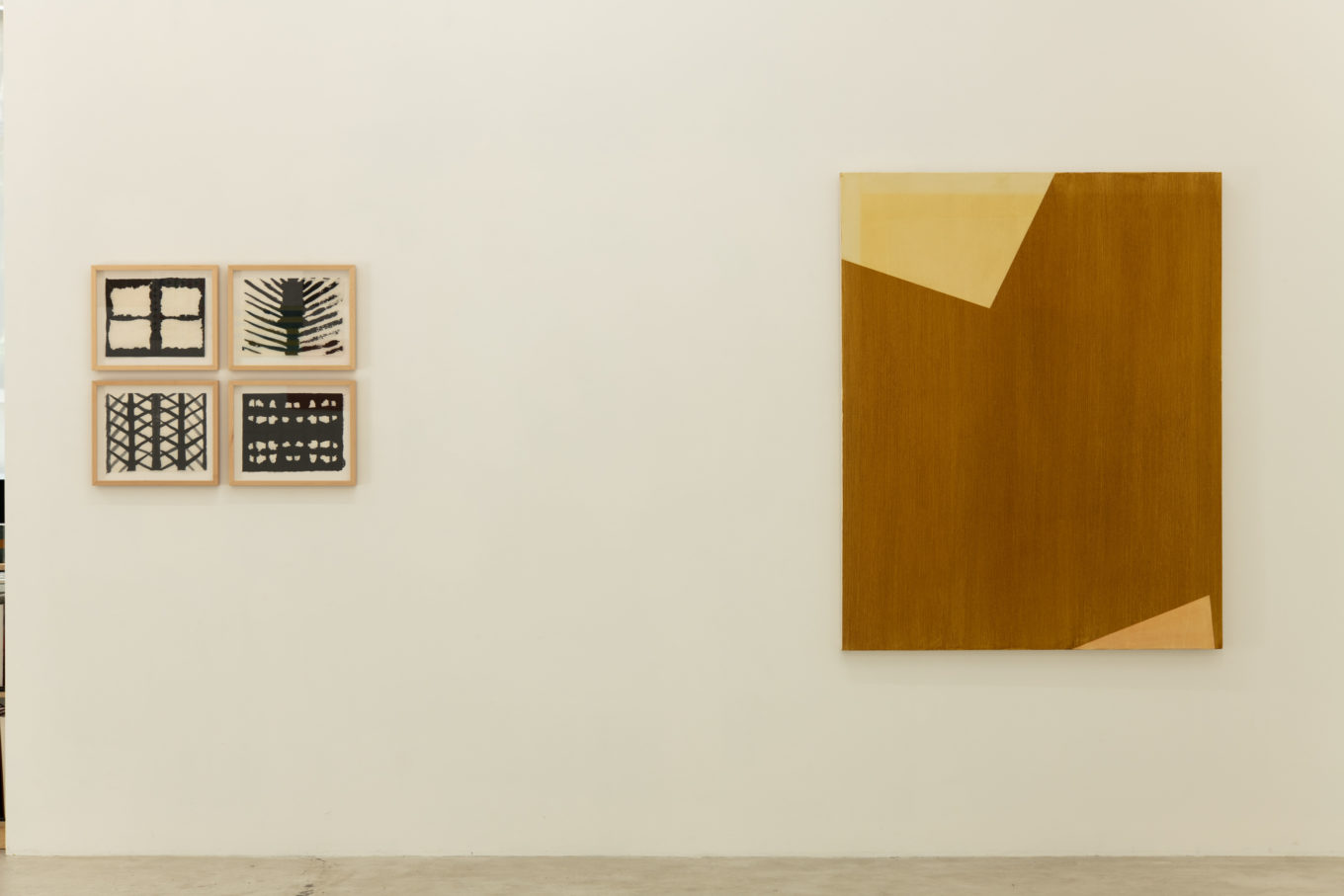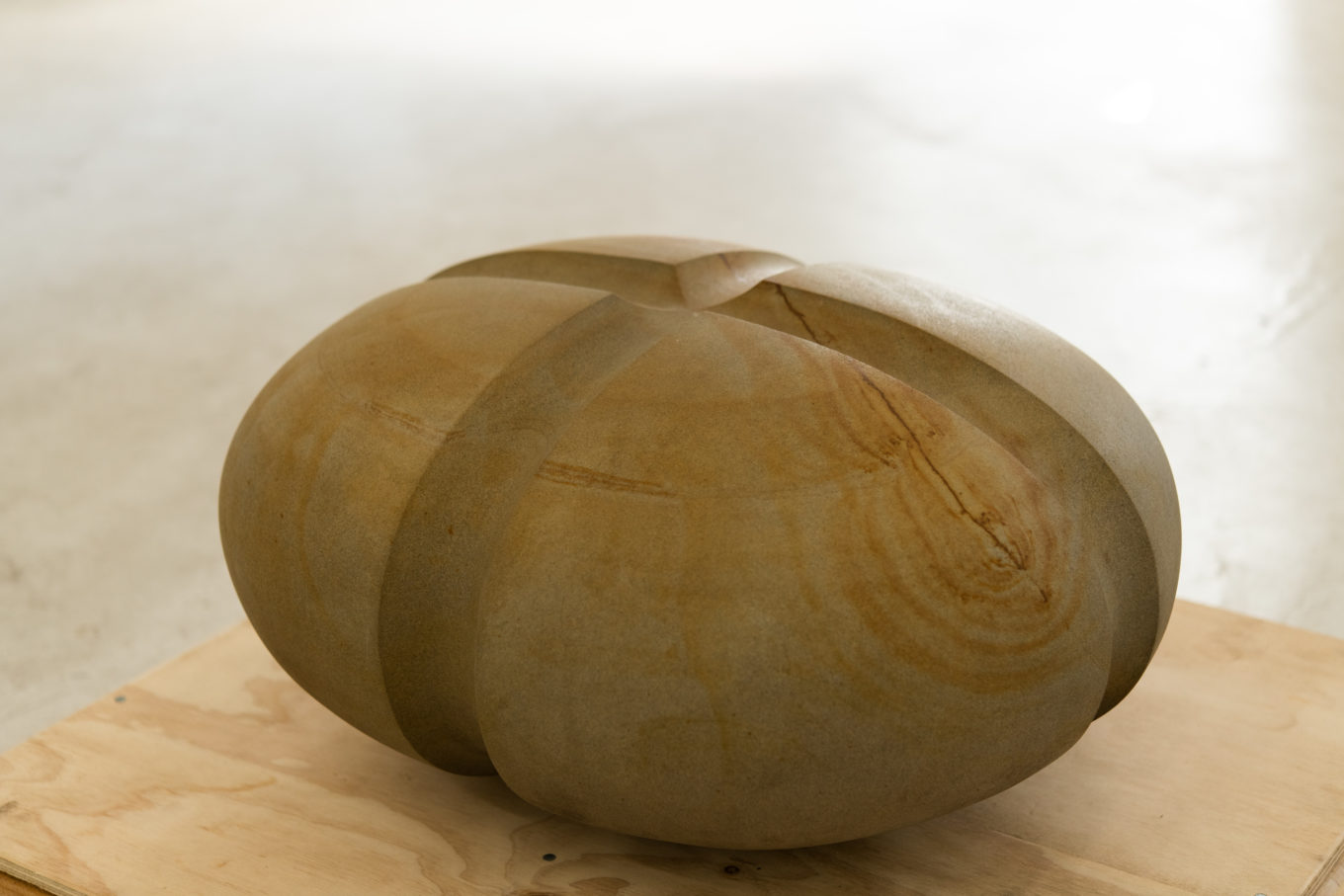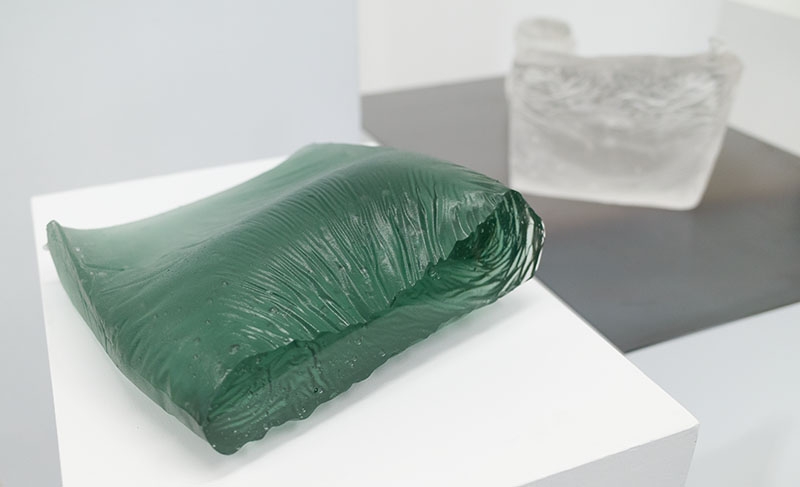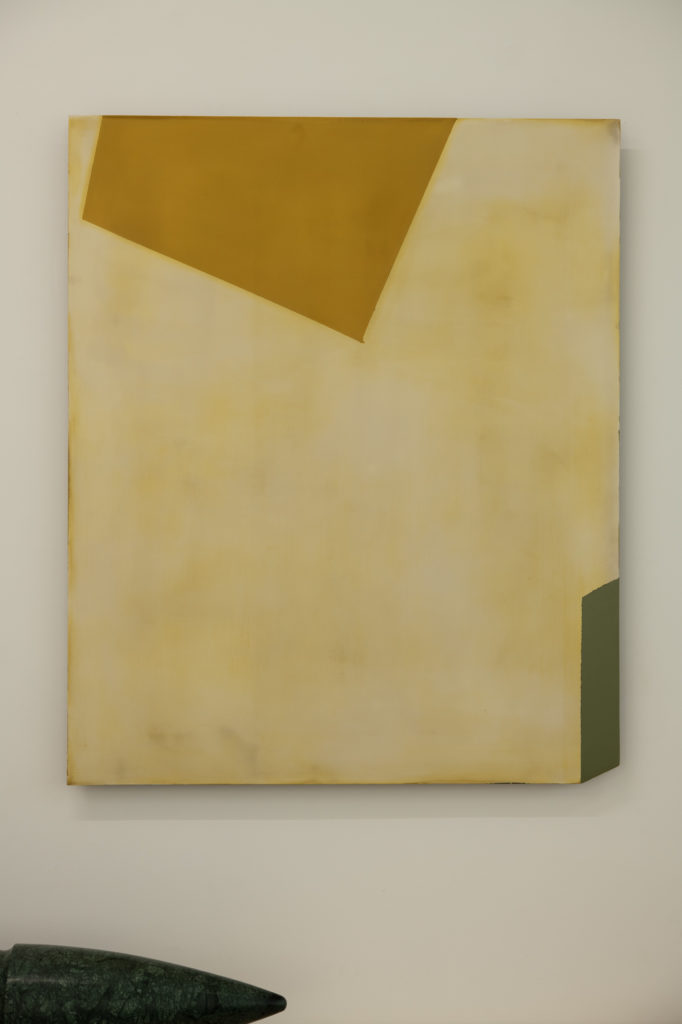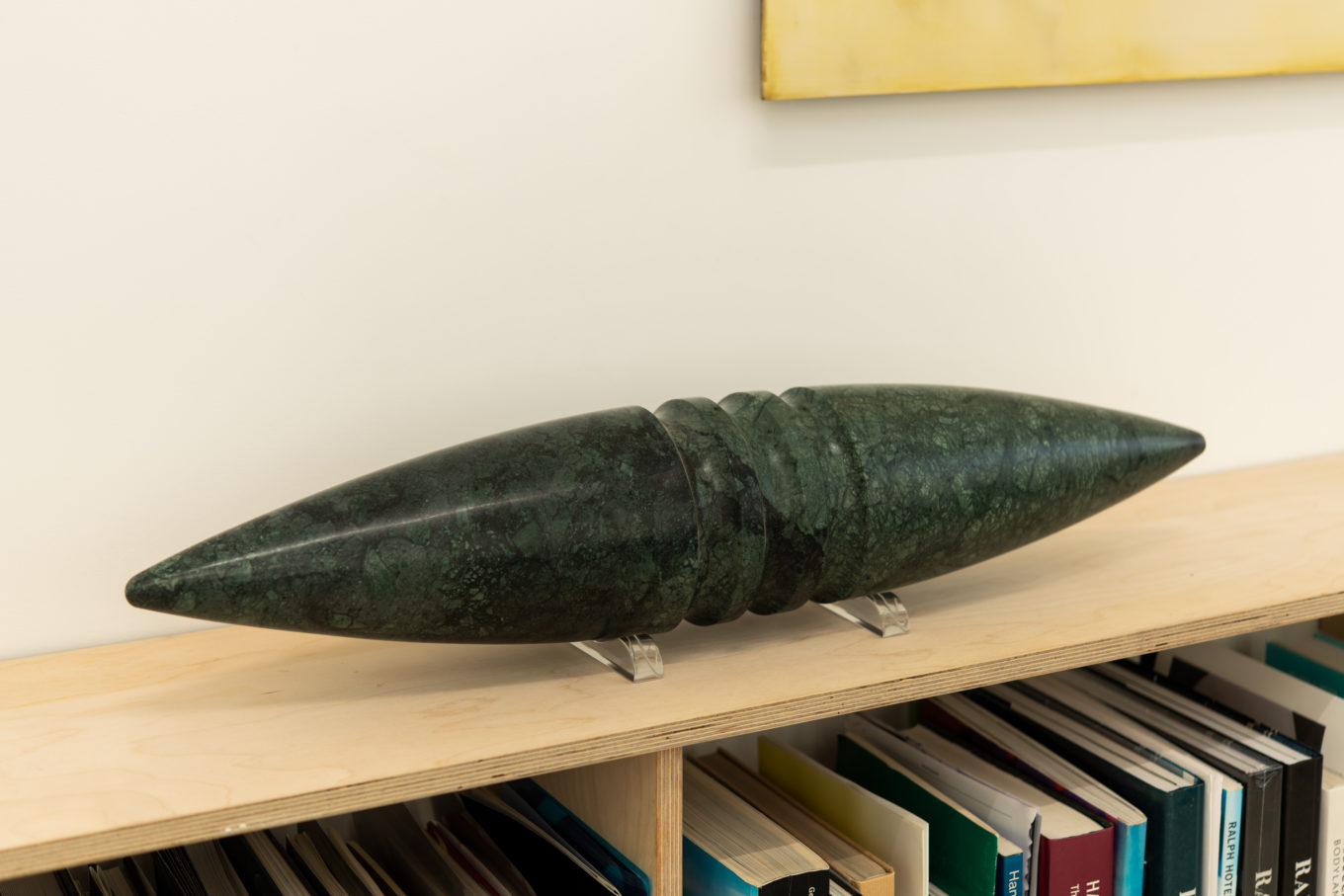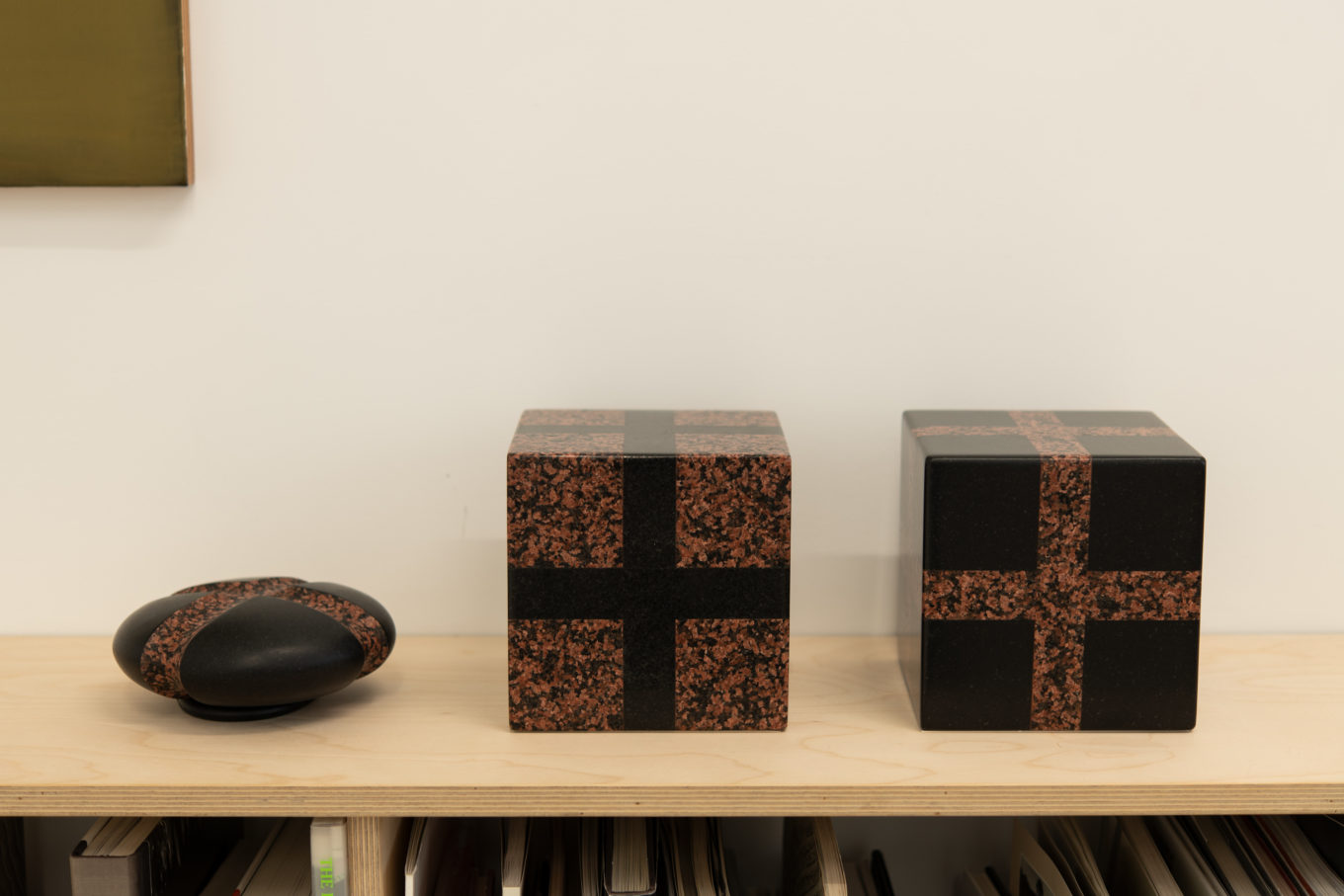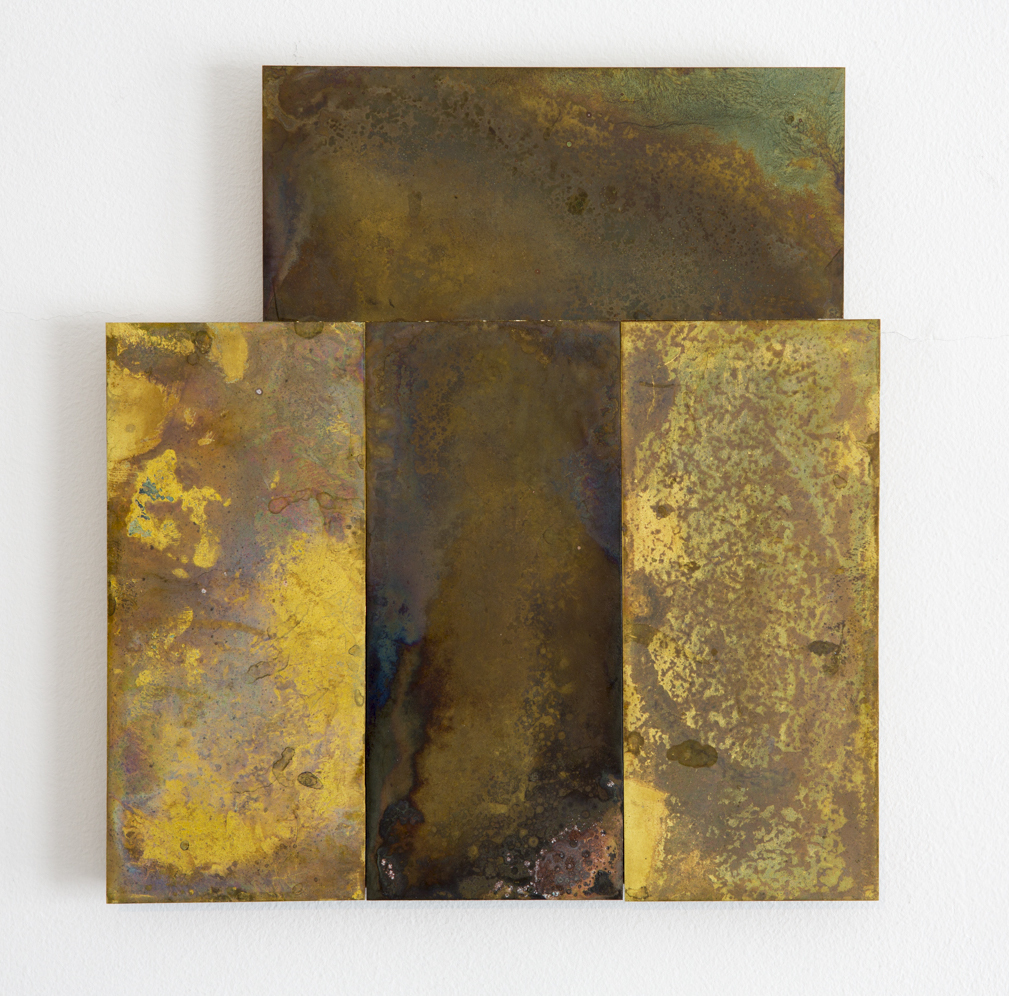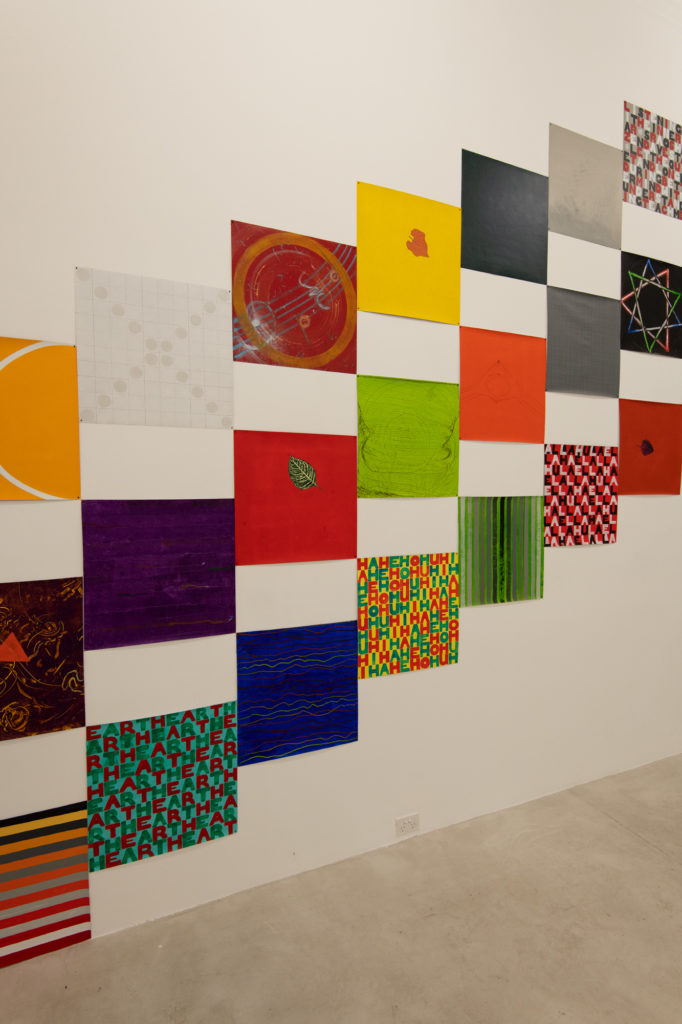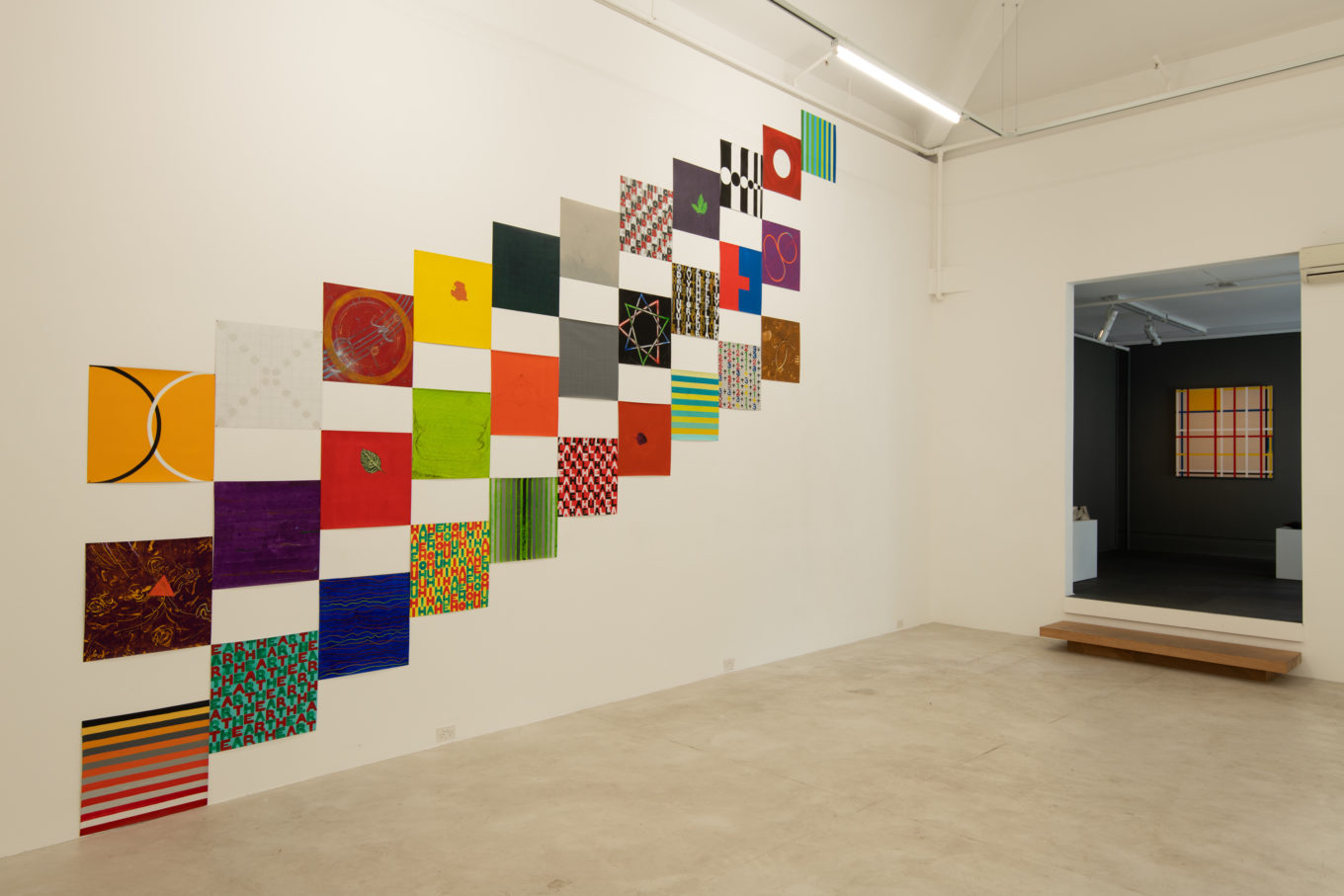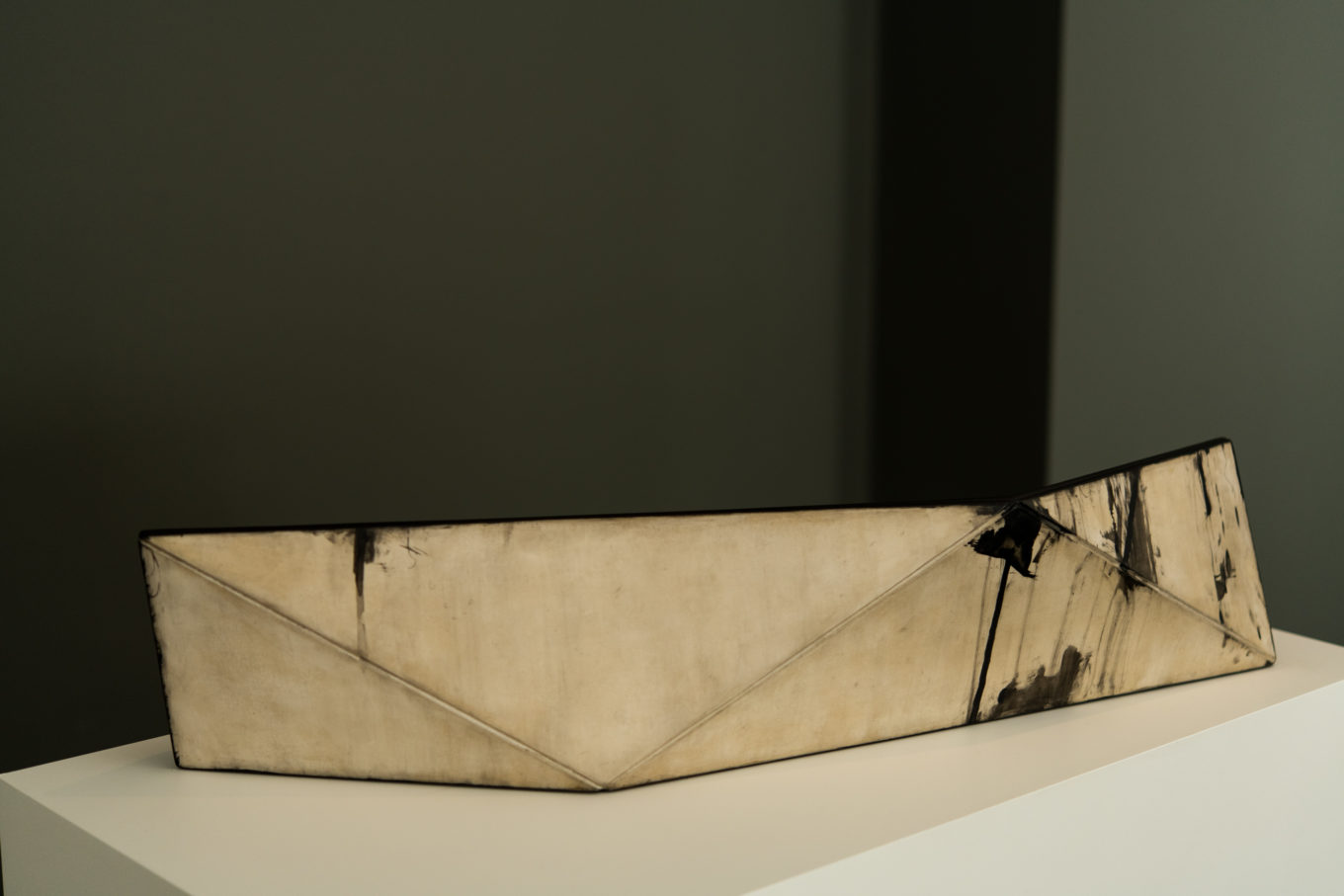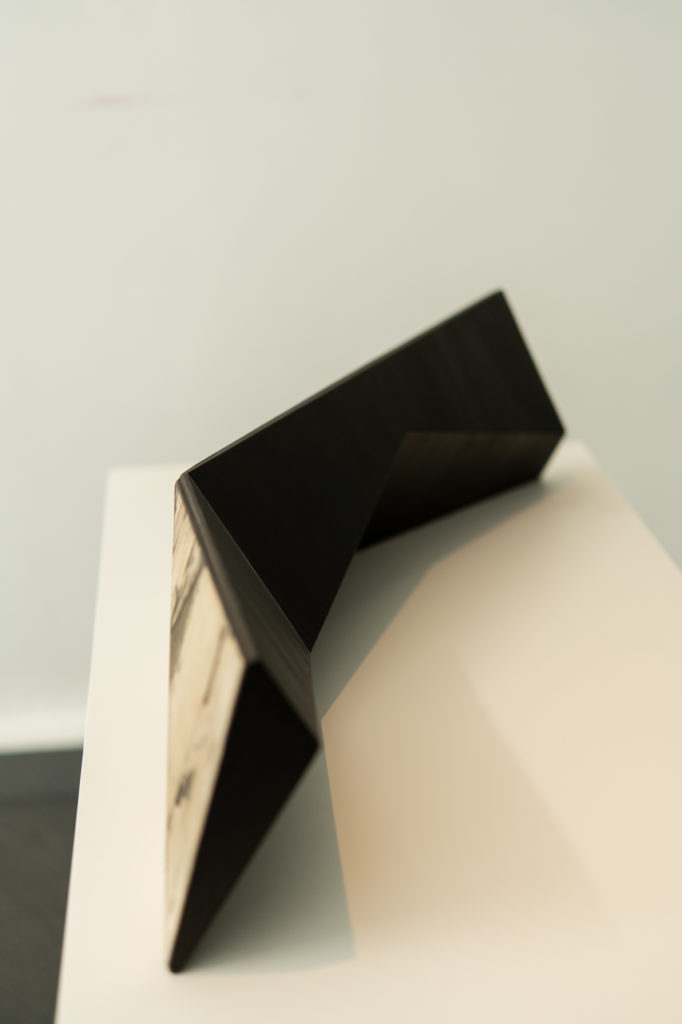Trish Clark Gallery is pleased to present P_R_O_C_E_S_S_, an evocative and satisfying mix of works by nine noted artists that come with a sculptural edge. The works all speak to an amplified understanding of process and a sense of durational material investigation. Those materials span stone, glass, timber, canvas, paint, brass, paper, ink, water, plaster and coffee grounds, though in these artists’ use they often confound ready apprehension, with the corporeality of the objects reminding us of the armatures that artists employ to structure their endeavours.
Phil Dadson’s May Music, 2018 is presented for the first time, in its entirety. Installed in a grid spanning 4.5 metres by 5.5 metres, May Music expresses the rhythms of life grounded in an art practice that is a profound exercise in vigour /contemplation /quietude /language /symbolism /abstraction /drawing /film. Dadson’s long-duration performative work is a 12-year project during which, in sequential months each successive year, he performs a daily practice of a visual score – adding to January Music, 2014, February Music, 2015, March Music, 2016 and April Music 2017, all of which have been exhibited at Trish Clark Gallery in various years. The project manifests Dadson’s long adherence to the exploratory and provisional impulse; he has been pushing the boundaries of sound and intermedia art in New Zealand since the 70s as an influential educator, accomplished international performer/exhibitor and the subject of works held in the permanent Collection of New York’s MoMA.
Another artist in his 70’s, Anthony McCall, demonstrates equal vigour in his long-time explorations of light and water in one form or another. Best known for his solid light sculptures, we present here Water Table, first exhibited in 1972 in London, and Doubling Back, 2007, a limited edition pigment print on paper that ‘doubles’ McCall’s drawing of his solid light sculpture with a sequence of that work’s ever-changing ‘footprint’ on the wall. The multi-part Water Table evidences in early form the artist’s interest in temporal progression developed in his renowned solid light sculptures. The compelling physicality by which McCall overturns normative understanding of ‘solid’ in his light pieces is here reversed, as a definitive set of solids appear to dematerialise over the course of McCall’s interventions, finally captured as a plane of immaterial light.
Approaching his 7th decade, Stephen Bambury, as ever, explores and delivers an expanded painting practice that is underpinned by the fusion of deeply personal and emotional content with substantively researched materiality. His constant investigations and comprehensive technical mastery results in works that utilise precious and semi-precious metal gilding, graphite, resin, chemical patinas and rust, amongst other materials. Bambury employs an exceptional range of scale, from several meters to under 200 mm, to great affect.
We present a significant body of new works by John Edgar alongside two statuesque earlier works and Matrix, a set of nine small stones carved especially for Edgar’s survey exhibition at The Dowse Art Museum in 2002, and unseen since. Underpinning John Edgar’s fascination with stone as his primary material for over thirty years is his early geology training coupled with an understanding that his role is to ‘get out of the way and give the stone a voice.’ Central also is his passionate care for the environment, bringing into balance the elements of concept, material and process. He says ‘these slices of the land are revelations of how intimately the environment meshes. How seamless are the interrelationships of earth and sky, land and sea, heaven and earth…’ An uncanny ability to recognize particularities in the stones he chooses to work with guides Edgar in creating seamless convergence of apparently disparate elements. Enormous technical sophistication creates works without flaw, as he recombines that which he has divided, creating artefacts at once modern and timeless that belie the sheer physicality and heavy mechanical processes necessary.
Internationally known for her cast-glass sculpture and with her work in prestigious museum collections in UK, Europe and the Americas, Galia Amsel’s training in London at the Royal College of Art led to a highly developed visual language based on colour, form, tension, geometry, and complete control over her technically difficult medium. Re-contextualising her practice to the rural edge of west Auckland in 2003 provided fresh surroundings to synthesise a new dialect of patterns, rhythms and colours, invigorating Amsel’s capture and transmission of these new surface and light effects, while exploring tension and balance. More recently Amsel has been pushing her practice into more experimental territory, maintaining her position at the forefront of her genre; selected in recent years for both the prestigious Coburg Glass Prize Exhibition and large scale installations in Salisbury and Chichester Cathedrals in the UK, she presents experimental work in P_R_O_C_E_S_S_.
Kazu Nakagawa’s practice defies ready labelling, underpinned as it is by his fundamental philosophical positions, with his works emblematic of the Japanese concept of ‘ma’ – the space between, the distance between, the room between or around things. Born and trained in Tokyo, Nakagawa became a committed New Zealand island-dweller in 1988. His works present us with a tapestry of materiality (or often, seeming immateriality) that is determined by the conceptual underpinning of each work – he will employ any media as required as well as more evanescent materials, shade and sound, subtly traversing materiality, space, time and language. His is a conceptual and experiential consistency that the present moment delivers all there ever truly is.
Jennifer French delivers a disarming, perplexing and ultimately captivating fluidity in her handling of time, intuition and the nature of perception. Internal grand scale comes via her blown up, blown out images of architectural entities, and become dream-like, strangely more emotion than physicality, somehow evoking a sense of shared recognition while being at once unknown yet nostalgic.
Stella Brennan’s drawings are like dismembered books, with pages folded, printed, perforated, stained and soaked. Ink marks bleed into their very structure like a Rorschach test or a stain seeping through cloth. With a practice that spans the handmade, new media, curation, installation, social projects and urban design, Stella Brennan’s work deals above all with navigating the space and time between human subjects. Brennan prises open history, its losses and possibilities, interrogating colonialism, industrialisation and computerisation. Chief Curator at Wellington’s City Gallery, Robert Leonard, has stated “Brennan…explores the history and currency of modernity, the dream of human perfectibility and emancipation premised on rationality, technology, progress. She researches modernity’s grand schemes and utopian ideologies, and their fate in the brave new world of the present.” Brennan was a Walters Prize Finalist in 2006.
Having completed his Bachelor of Visual Arts in 2015, Brendon Leung is currently engaged in his Master of Design at Unitec Institute of Technology, and presented his first solo exhibition, Zeninimalism, in 2017 at TSB Bank Wallace Arts Centre | Pah Homestead. Born in Auckland in 1994 of Chinese background Leung appears to unselfconsciously channel ancient approaches and knowledge into his contemporary explorations. Eastern philosophical ideas readily embrace correlations with abstraction, the artist referencing nature, space and the human condition. Leung’s paintings, while appearing pared back, might be composed of hundreds of layers, often utilising found and unconventional materials, including tea and coffee; Leung concentrates on ideas of imperfection and impermanence, drawing out the atmospheric qualities of his materials to deliver potently affecting contemplative paintings.

